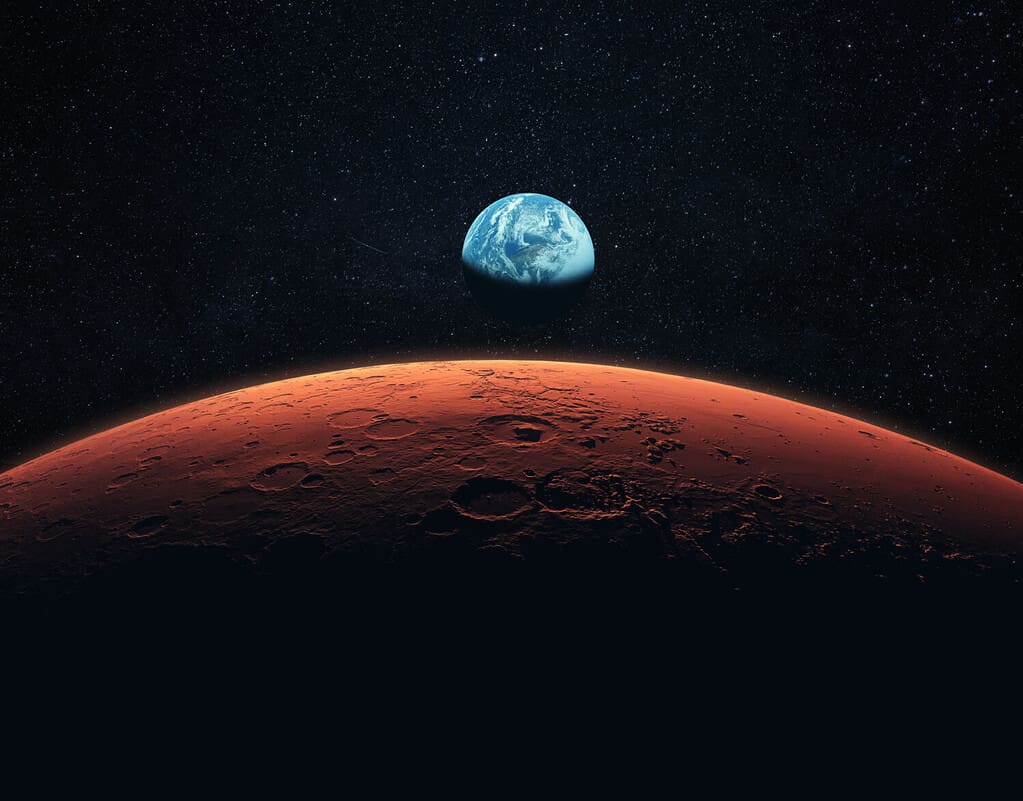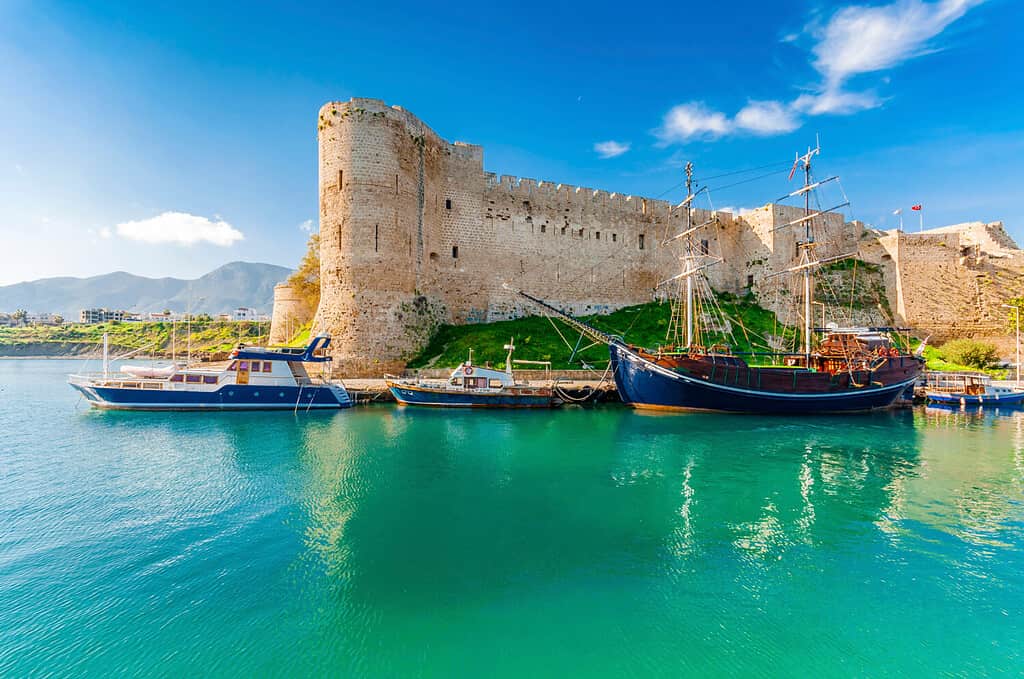Even for those used to saying the word “Fahrenheit,” to spelling it is a different matter. But beyond the studious study of vocabulary, there’s also the placing of geography: that is, what countries even use this barely spellable scale of temperature measurement? Well, here we arithmetic the countries that use Fahrenheit for metering the thermos. Before providing our hot takes on these 19 countries (and territories, technically; but more on this later), let’s get a handle on who Fahrenheit, the man, was, and what his temperature scale is all about.

Discussions surrounding the finer points of humidity, such as relative humidity, dewpoint, and heat indexes, may be associated in the popular imagination, especially in the United States, to Fahrenheit, they are underpinned more by “cloud microphysics” than what temperature scale one uses.
©AntonSAN/Shutterstock.com
The Road to Temperature Scale Standardization
German-Polish physicist Daniel Gabriel Fahrenheit first proposed his temperature scale in 1724, 10 years after he invented the mercury thermometer. Soon after, in large part due to the British Empire’s influence, the scale saw widespread adoption across the globe. However, most countries have since switched to the Celsius scale.
Why was Danny boy’s temperature scale such a big deal? Well, long before the advent of the iPhone’s weather app, humanity wrestled with measuring temperature. In the mid-1600s, it became glaringly obvious that a standardized scale was needed. As we can imagine, early thermometers were a mixed and not-so-accurate bag. They ranged from rudimentary methods like feeling the air with a human hand (as if to check Mother Nature’s forehead for a fever), to more sophisticated instruments like Galileo’s thermoscope.
The Ingenious Minds
Enter Christiaan Huygens. In 1665, he proposed using the freezing and boiling points of water as standardized benchmarks. These are known as the phase changes of water. Following in his footsteps, Building upon Huygens’ idea, Sir Isaac Newton in 1701 suggested breaking the scale up into 12 units between the freezing point of water and the average temperature of the human body. (We can see how these cutting-edge lines of thought built off one another, with the Calorie’s historical connection to units of heat and later to energy conversion inside the human body to the modern kcal. In addition to personal genius, real-life “beautiful mind” moments take time, intellectual collaboration, and collective inspiration.) After his parents’ untimely death by accidental consumption of poisonous mushrooms, the teenage Daniel Gabriel Fahrenheit seized the baton and ran with Huygens and Newton’s ideas. By 1710, the 24-year-old Fahrenheit had elevated temperature measurement with his alcohol and mercury thermometers.
Fahrenheit Enters the Scene
In 1724, Fahrenheit presented his scale. He set 0°F based on the freezing point of a specific brine mixture and pegged 100°F close to human body temperature. These revolutionary moves would go on to have a lasting impact.
The Celsius Response
Anders Celsius wasn’t far behind. In 1742, he debuted his centigrade system, splitting the difference between water’s freezing and boiling points into 100 neat divisions. But Celsius went the extra mile, diving into atmospheric studies to confirm that freezing points were consistent while boiling points fluctuated with altitude. In a manner, he saw Fahrenheit’s iPhone 15 artistry and met it with Pixel 8-level utility.
The Battle for Adoption
The British Empire found Fahrenheit’s scale irresistible, adopting it across its vast territories, including what would become the United States. Meanwhile, the rest of Europe was swayed by Celsius’ scientific utility and flexibility, eagerly embracing the scale.
Kelvin: The Overlooked Champion
Enter Kelvin, named after William Thompson, the First Baron Kelvin. A Celsius offshoot, Kelvin is tailored for extreme temperatures. It introduces absolute zero, the temperature at which molecules stop moving, a frigid -275.15°C (-459.67°F). Keeping the Celsius scale, Kelvin starts counting from this absolute base, serving as an essential tool for precision-driven scientific applications. Without Kelvin, there wouldn’t be a clear, concise, and meaningful way to talk about things like the temperature of space or how hot the center of our sun gets.

It was Anders Celsius, known as the founder of Swedish astronomy, who proved that the boiling point of water can, far from absolute, can be affected by many factors. Altitude was prime among them.
©AgriTech/Shutterstock.com
Countries vs. Territories
Understanding what follows hinges on one crucial idea: not every place on the list is an independent country. In the realm of international law, a “country” or “nation” refers to a sovereign state, enjoying global recognition, with total control over its territory and citizens. It has the power to form treaties, make laws, and conduct foreign policy.
On the flip side, a “territory” is essentially a region governed by another country. While it might have local governance, its ultimate authority lies with a sovereign nation. Typically, territories lack the independence to manage foreign affairs and often depend on the parent country for defense and international diplomacy.
This distinction matters when talking about temperature scales. In both countries and territories, people may use Fahrenheit, but it’s vital to grasp their different levels of autonomy and global standing.
Our 19 Fahrenheit Devotees
The countries that currently use Fahrenheit, listed from most populous to least, along with a brief note regarding their relationship to the scale are:
1. The United States
When it comes to using Fahrenheit, the United States stands out as a populous and influential exception. While the world mostly transitioned to Celsius and the metric system in the latter half of the 20th century, America clung to Fahrenheit for everything from weather reports to kitchen gadgets. But why?
At its core, the answer lies in history and inertia. The Fahrenheit scale became popular in the American colonies and endured even after the country gained independence. Primarily employed for climatic, industrial, and medical measurements, Fahrenheit was the go-to scale in English-speaking countries until the 1960s. As the rest of the world moved to Celsius during their metric transitions in the late ’60s and ’70s, the US bucked the trend. A mix of historical attachment and resistance to change has kept Fahrenheit deeply rooted in American culture.
Additionally, some advocates argue that Fahrenheit offers a more precise gauge of air temperature, relevant to human comfort. With its scale based on 32 degrees for freezing and 212 for boiling water, and 180 equal intervals in between, Fahrenheit provides a higher granularity of measurement. Whether or not you find that persuasive, there’s no denying that Fahrenheit remains a steadfast part of the American way of life, despite global trends leaning toward metrication.
However, the use of Fahrenheit has been criticized for its lack of simplicity compared to the Celsius scale, which has 0 degrees as the freezing point of water and 100 degrees as the boiling point. The use of Fahrenheit in the United States has also led to conversion errors, such as the $125 million mistake that resulted in a NASA probe being destroyed in Mars’ atmosphere.

What does a German-Polish orphan (Fahrenheit) and the founder of Swedish astronomy (Celsius) have to do with the Red Planet and a crashed NASA probe? Everything, apparently.
©Alones/Shutterstock.com
2. American Samoa
A US territory, American Samoa uses the Fahrenheit scale. Here, the temperature rarely fluctuates, offering year-round warmth.
3. Antigua and Barbuda
This former British colony employs Fahrenheit due to its historical British ties.
4. The Bahamas
Located near Florida, the Bahamas adheres to Fahrenheit. Known for its tropical climate, the islands are a magnet for those chasing the sun.
5. Belize
A former British colony, Belize opts for Fahrenheit, reflecting its historical British roots.
6. British Virgin Islands
As a British Overseas Territory, the British Virgin Islands use Fahrenheit, owing to its relationship with the British Empire.

The British Virgin Islands lie just north of the US Virgin Islands.
©Andy Deitsch/Shutterstock.com
7. Cayman Islands
This British Overseas Territory employs Fahrenheit, a choice grounded in its British heritage. These Caribbean gems also measure temperature in Fahrenheit. The sea can get as warm as 88°F, perfect for diving and snorkeling
8. Guam
A US territory in the Pacific, Guam uses Fahrenheit. With a tropical climate, temperatures seldom drop below 75°F.
9. Liberia
Once an American colony, Liberia measures temperature in Fahrenheit, a nod to its historical American connections. The only African nation to use Fahrenheit, Liberia sees hot and humid weather, peaking in April with averages of 97°F.
10. Marshall Islands
Another freely associated US state in the Western Pacific, the Marshall Islands also favor Fahrenheit, influenced by its American ties. These islands are notably vulnerable to climate change, as rising sea levels pose a constant threat.
11. Federated States of Micronesia
Located in the Western Pacific, this freely associated state of the United States uses Fahrenheit due to its US affiliation.
12. Montserrat
As a British Overseas Territory, Montserrat uses Fahrenheit, maintaining its historical connection to the British Empire.
13. Northern Mariana Islands
A US territory, these islands use Fahrenheit. They have a tropical marine climate, characterized by moderate warmth.
14. Palau
This Pacific island country uses Fahrenheit and is famous for Jellyfish Lake, where millions of stingless jellyfish flourish in consistently warm waters.

Colorful San Juan, Puerto Rico, was devastated by Hurricane Maria in 2017, a Category 5 storm, and is to this day still struggling to recover.
©Martin Wheeler III/Shutterstock.com
15. Puerto Rico
A US territory, Puerto Rico adheres to Fahrenheit. Although the territory has a representative in the US Congress, their vote does not count. On a brighter note, Puerto Rico is the birthplace of the Piña Colada, a drink best savored ice-cold.
16. Saint Kitts and Nevis
This former British colony uses Fahrenheit, echoing its British past.

The Turkish Republic of Northern Cyprus is a de facto state that carves up the northeastern section of the island of Cyprus. Only Turkey recognizes it as a sovereign nation. The international community considers it part of the Republic of Cyprus. Like people, nations need to pick their battles, and this beautiful area, regardless of which flag it flies under, exists in peace.
©Nejdet Duzen/Shutterstock.com
17. Turkish Republic of Northern Cyprus
This region uses Fahrenheit due to its historical linkage with the British Empire.
18. Turks and Caicos Islands
A British Overseas Territory, it measures temperature in Fahrenheit, a practice rooted in its British origins.
19. US Virgin Islands
Another US Caribbean territory, they follow the Fahrenheit system. During the holiday season, temperatures can soar to 80°F, offering a break from wintry landscapes.
Each territory or country on this list has chosen Fahrenheit for temperature measurement, largely due to historical ties either with the British Empire or the United States. Whether former colonies or current associates, their Fahrenheit usage underlines enduring global relationships.
The Fahrenheit Conundrum: Precision vs. Universality
Is Fahrenheit superior to Celsius, or is it the other way around? The debate often hinges on a set of trade-offs—Fahrenheit’s enhanced precision comes at the cost of global compatibility and simplicity.
The Advantage of Precision: Subtle Differences in Comfort
Fahrenheit shines when it comes to capturing small differences in temperature. With 180 intervals between the freezing and boiling points of water, Fahrenheit provides a more detailed gradient than the 100 intervals in the Celsius scale. Why does this matter? In daily life, even a single-degree change can influence your comfort—consider the subtle but tangible difference between 78°F and 79°F. If you’re trying to express such nuance in Celsius, you’ll often need to resort to fractions, which can make things more complicated.
The Limits of Precision: Don’t Confuse it with Accuracy
It’s crucial to differentiate between precision and accuracy. Precision refers to the consistency of repeated measurements, while accuracy gauges how close a measurement is to its actual value. Both Fahrenheit and Celsius can yield accurate readings; often, the quality of the thermometer and the measurement methodology matter more than the choice of scale.
The Celsius Advantage: Global Adoption and Simplicity
Fahrenheit’s Achilles’ heel lies in its limited global reach, creating barriers in international communication. Furthermore, its complexity can discourage those familiar with the metric system. In contrast, Celsius offers intuitive freezing and boiling points—0°C and 100°C, respectively—which align with the metric system’s penchant for simplicity and easy conversions.
The Verdict: A Tale of Trade-offs
In summary, Fahrenheit offers finer granularity, making it more attuned to subtle changes that matter in human experience. However, it falls short in global adoption and intuitive logic, especially compared to the straightforward design of the Celsius scale. So, which is better? It often comes down to the context in which you’re using the temperature scale, a classic case of situational suitability over absolute supremacy.
Decoding Temperature: Conversions, Curiosities, and Cultural Context
Temperature is more than just a digit on your phone screen; it’s a universal language that often harbors confusion, misconceptions, and fascinating stories. Let’s unravel the complex web of Fahrenheit and Celsius—two scales that narrate the same tale in different tongues—and explore how they intersect with science, literature, and even contentious debates.
Conversion Therapy for Number Nerds
When it comes to the mathematical relationship between Fahrenheit and Celsius, their formulas—\(F = \frac{9}{5}C + 32\) and \(C = \frac{5}{9}(F – 32)\)—are proportional. This means an increase in Celsius will predictably hike up the Fahrenheit reading. And for number enthusiasts, both scales intersect at a frosty -40 degrees.

Dolbear’s Law states that…chirp-chirp (count for 25 seconds), divided by 3, to which you add 4, provides the air temperature in Celsius.
©iStock.com/PetrP
Crickets, Nature’s Pre-Alexa Hands-Free Temperature Assistants
Did you ever listen to a cricket’s chirp and think it might be telling you something? Indeed, Dolbear’s Law allows you to measure temperature by counting a cricket’s chirps. Count for 14 seconds, add 40, and you have the temperature in Fahrenheit. For Celsius, count for 25 seconds, divide by 3, and add 4. Nature, it seems, has its own built-in thermometer.
Fahrenheit in Literature
Beyond the scientific realm, Fahrenheit has literary significance. Ray Bradbury’s iconic Fahrenheit 451 employs the scale to signify the ignition point of books, reflecting on themes of censorship and intellectual freedom. It’s a compelling nuance with particular salience in the United States of today in how a tool for measuring physical heat can also symbolize the “heat” of social discourse.
Sometimes Crime Does Pay: On the Lam for the Sake of Science
Born into a well-off family in 1686, Daniel Gabriel Fahrenheit faced tragedy early. Orphaned at 15, he was apprenticed in Amsterdam but soon became captivated by the flawed Florentine thermometer. Ignoring his guardians and the debts he’d accrued, Fahrenheit envisioned a universal thermometer that defied local quirks for universal calibration.
When his guardians conspired with local police to trap and arrest the young Fahrenheit and send him into forced labor to repay his debts, he wisely fled. Evading capture across multiple countries, he met key scientific figures and honed his skills. By the age of 24, he’d accessed his inheritance, settled his debts, and continued to refine thermometers.
From near ruin, Fahrenheit emerged to give us a lasting measure of temperature, proving that sometimes precision is worth risking it all. Also, that sometimes, you must break a few eggs and nonsensical laws to make an omelet.
Conclusion
Who knew that the seemingly mundane subject of temperature could unfold like an action-packed drama? Both Fahrenheit and Celsius offer unique pros and cons, making one no better than the other in absolute terms. They serve as differing perspectives, capturing the world’s thermal nuances through their own distinct lenses. But if the scales were weighed on the intrigue of their backstories, Fahrenheit would undoubtedly tip the balance. Its saga of youthful rebellion, daring escapes, and scientific ingenuity turns a mere unit of measurement into an exhilarating tale of risk and discovery. So even if the 19 holdout countries do sometimes feel the burn of Celsius logic, they can at least bask in the knowledge that their temperature scale has heart.
This table succinctly captures the use of Fahrenheit across different nations and territories. However, the specifics of average temperatures are mostly absent, emphasizing a broader insight into the varied climates. From the tropical warmth of American Samoa and Guam to Liberia’s humid highs, the Fahrenheit scale encapsulates a wide spectrum of climatic experiences. Yet, the absence of detailed temperature averages leaves room for further exploration and understanding of these diverse geographical locales.
The photo featured at the top of this post is © BalkansCat/Shutterstock.com
Thank you for reading! Have some feedback for us? Contact the AZ Animals editorial team.







